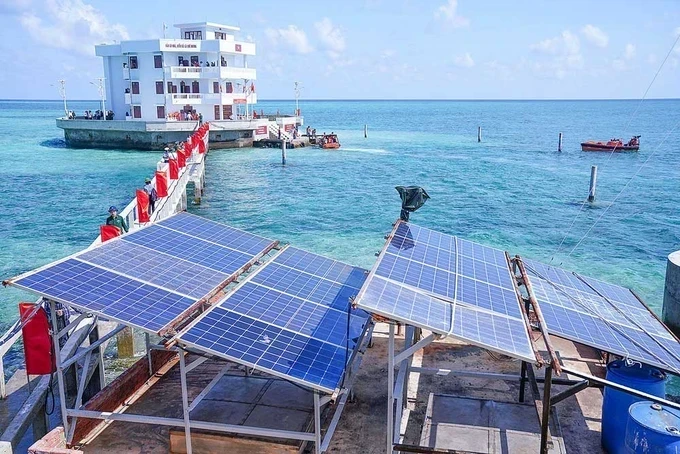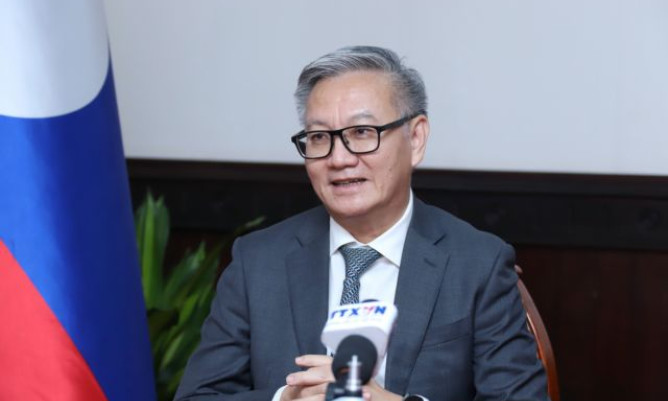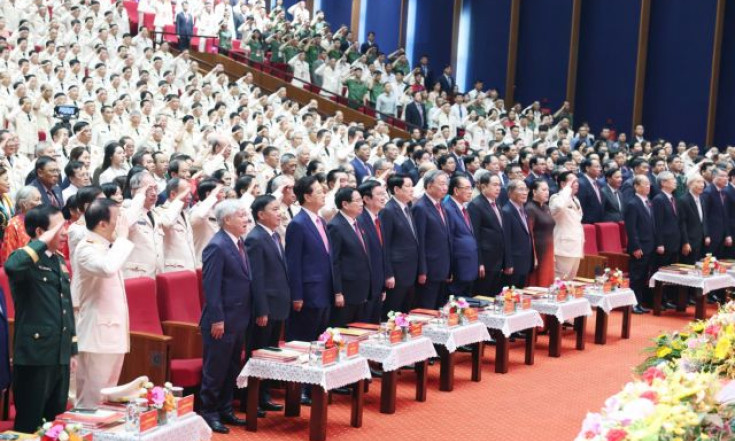Encouraging conversion to green energy
Green development, energy conversion and emission reduction are inevitable trends. Vietnam has been implementing many energy transition policies, including the shift to renewable energy sources and researching new technologies.
At the conference of the parties to the United Nations Framework Convention on Climate Change (COP26) at the end of 2021, nearly 100 countries pledged to cut methane emissions by 30% by 2030, and 40 countries, including Vietnam, pledged not to develop and gradually eliminate coal-fired power, which is a huge source of CO2 emissions.
As of the end of 2022, more than 70 countries creating about 76% of global emissions made commitments to achieve net zero emissions targets, of which the energy sector accounts for more than 73% of total greenhouse gas emissions globally. Therefore, in emission reduction policies of countries around the world, the electricity and transportation sectors play a very important role.
Experts say that Vietnam’s green transformation must pay attention to the energy industry first. The National Strategy on Green Growth in the 2021-2030 period, with a vision to 2050 and the National Action Plan on Green Growth in the 2021-2030 period have outlined directions for green energy transformation: “Improving effectiveness of energy use, reducing energy consumption in production, transportation, commercial and industrial activities, ensuring national energy security, towards synchronous development of energy sources, economically using domestic energy sources, transforming the structure of energy sources towards minimising dependence on fossil energy, increasing the proportion of renewable energy sources and new energy, in national energy production and consumption”. This is a comprehensive orientation for transforming the energy sector to contribute to the country’s emission reduction goals.
After Prime Minister Pham Minh Chinh announced Vietnam’s commitment to reduce net emissions to zero by 2050 at the COP26 conference, Vietnam has taken many specific actions to achieve this goal. Most recently, the Prime Minister announced the actions Vietnam has been implementing within the framework of the COP28 conference. Accordingly, the Government has focused on building plans and implementing the Climate Change Strategy, Green growth strategy, Electricity Planning VIII towards renewable energy, and Developing the renewable energy industry and building a renewable energy ecosystem.
Resolution No. 29-NQ/TW dated November 17, 2022, of the 13th Party Central Committee on “Continuing to promote industrialisation and modernisation of the country until 2030, with a vision to 2045” also mentioned incentive mechanisms and policies to develop several industries, including the energy industry while encouraging domestic enterprises to cooperate with foreign enterprises to produce renewable energy equipment, battery storage systems, and energy-saving technologies and products.
Thanks to timely policies and actions, Vietnam has become the most potential and vibrant market in the Asia-Pacific region and led Southeast Asia in wind and solar power development. By the end of 2022, the total power capacity of the entire system reached 79,250 MW, including 20,165 MW of renewable energy sources (wind power, solar power), accounting for 25.4% of the total energy capacity.
However, the supply chain localisation rate as well as the deep participation of Vietnamese businesses in providing services for the renewable energy sector (wind power, solar power), remains low. The slow localisation of equipment production and services in the renewable energy sector in Vietnam is partly due to a lack of project assessment and development capacity, poor infrastructure and dependence on foreign countries. Besides, technological capacity and production level do not meet the requirements. In addition, policies and support mechanisms for renewable electricity are insufficient or not strong enough.
Many experts believe that it is necessary to build national centres for renewable energy in potential localities, along with devising outstanding mechanisms and policies to select investors for offshore wind power and gas power projects. It is also advisable to come up with preferential funding policies for renewable energy in addition to learning good international experiences in attracting investment in clean energy.
Dr. Nguyen Ngoc Hung from the Institute of Energy (Ministry of Industry and Trade) proposed solutions for Vietnam’s energy industry to achieve net zero, including efficient use of energy efficiency, electrochemistry in economic sectors, renewable energy development, promoting new energy sources, and carbon capture, usage and storage.
In addition, to achieve the committed goals, it is necessary to boost capital sources and credit flows for environmentally friendly projects and complete the relevant legal corridor. It is also important to clarify the criteria of green projects as a basis for credit institutions to support such projects. The building of mechanisms and policies supporting capital market development will meet the long-term capital needs of businesses investing in green and renewable energy projects during the energy transition process in Vietnam.






